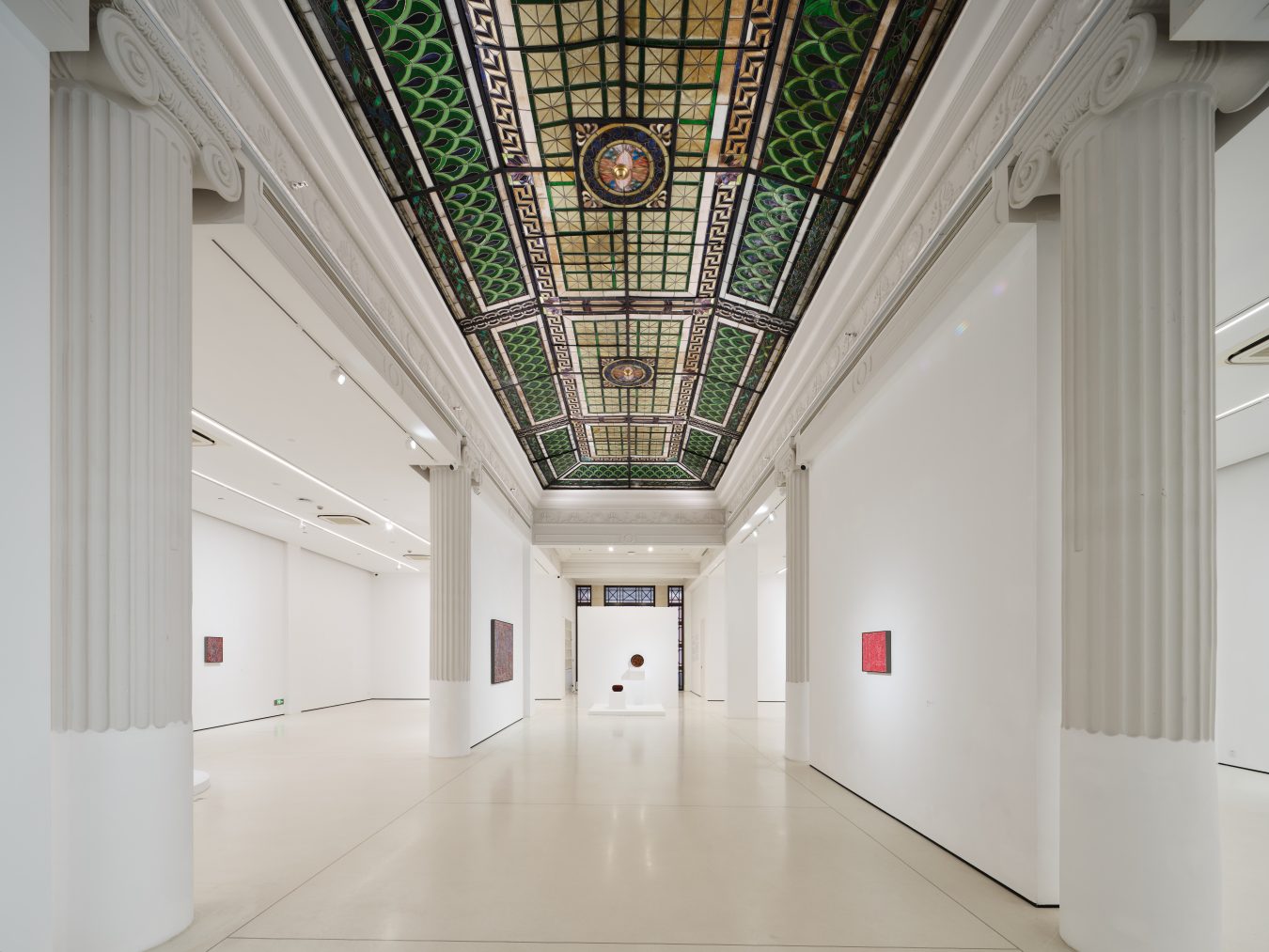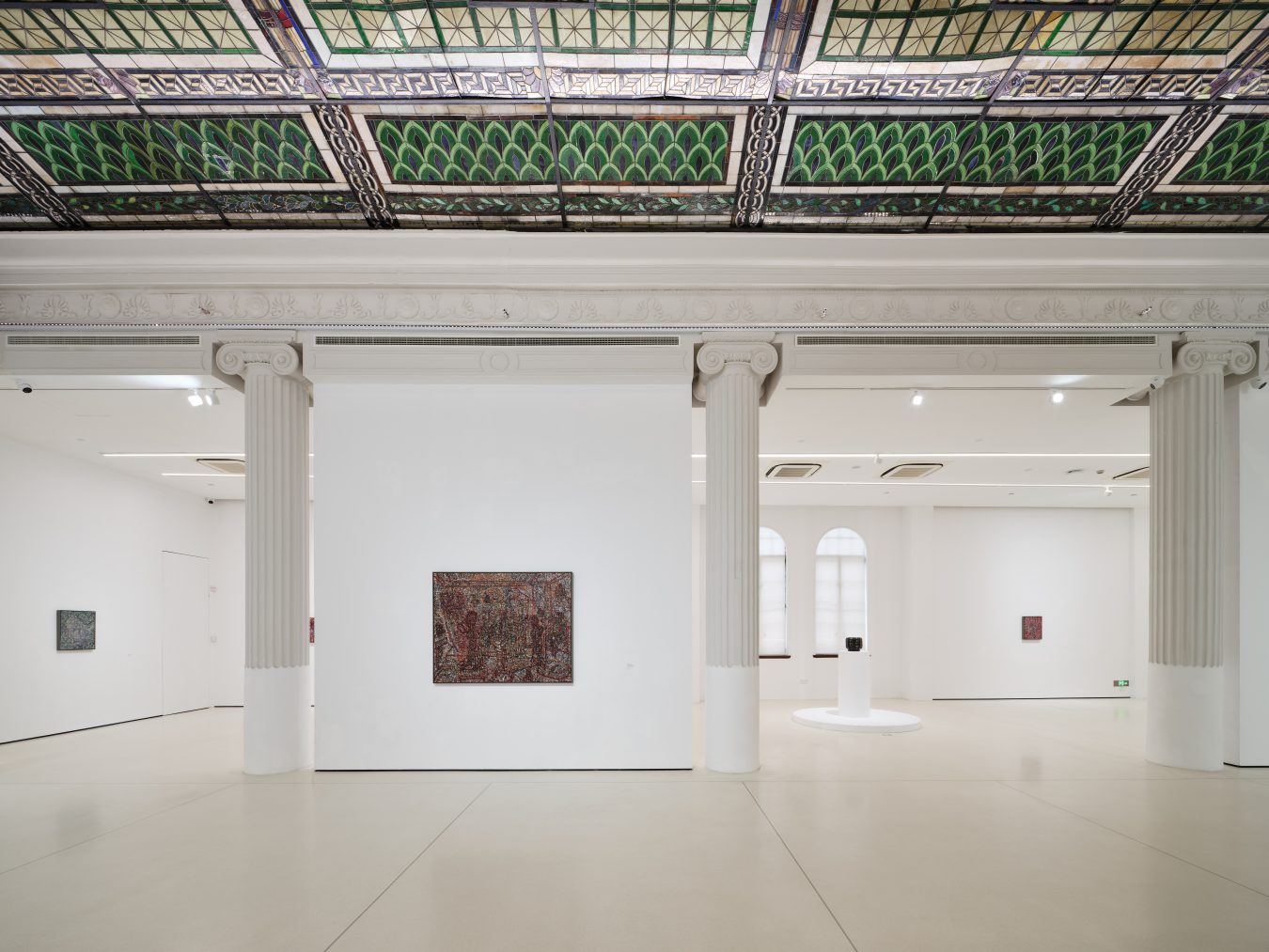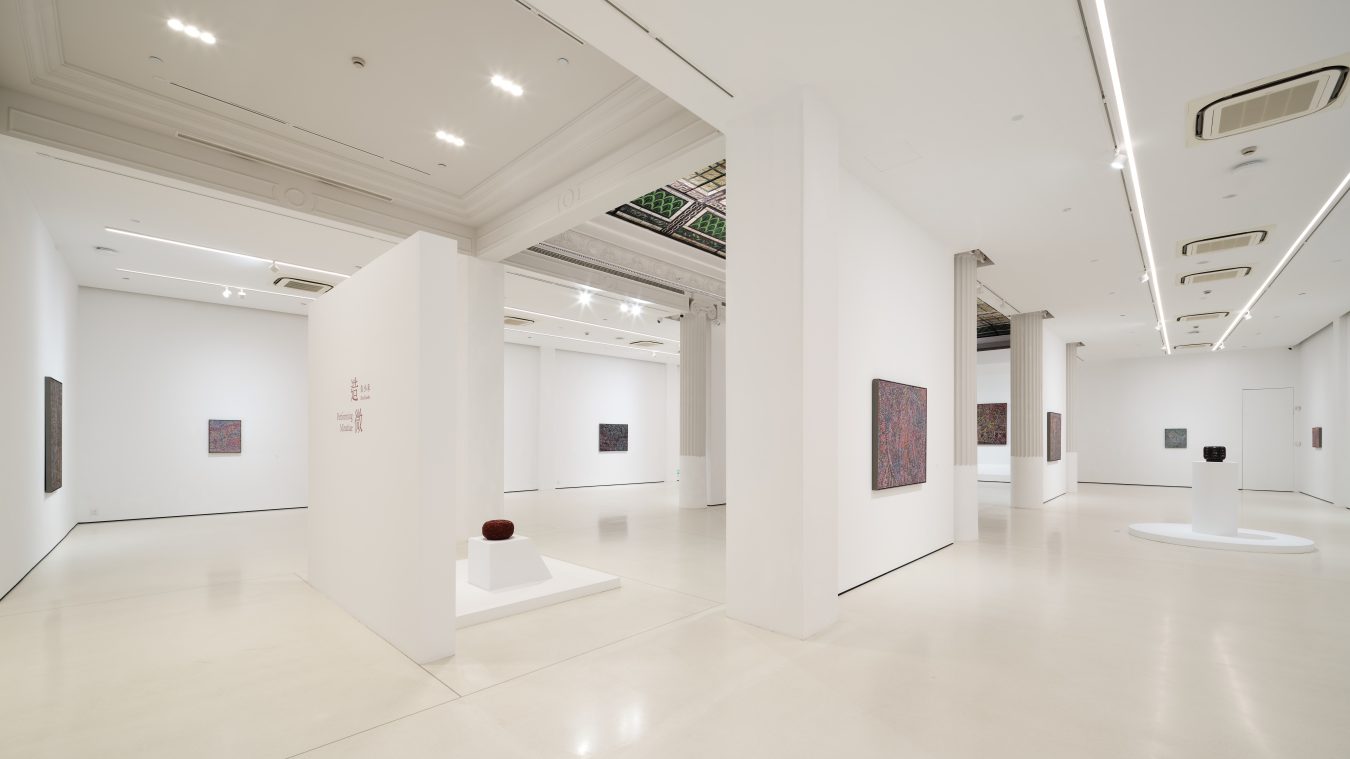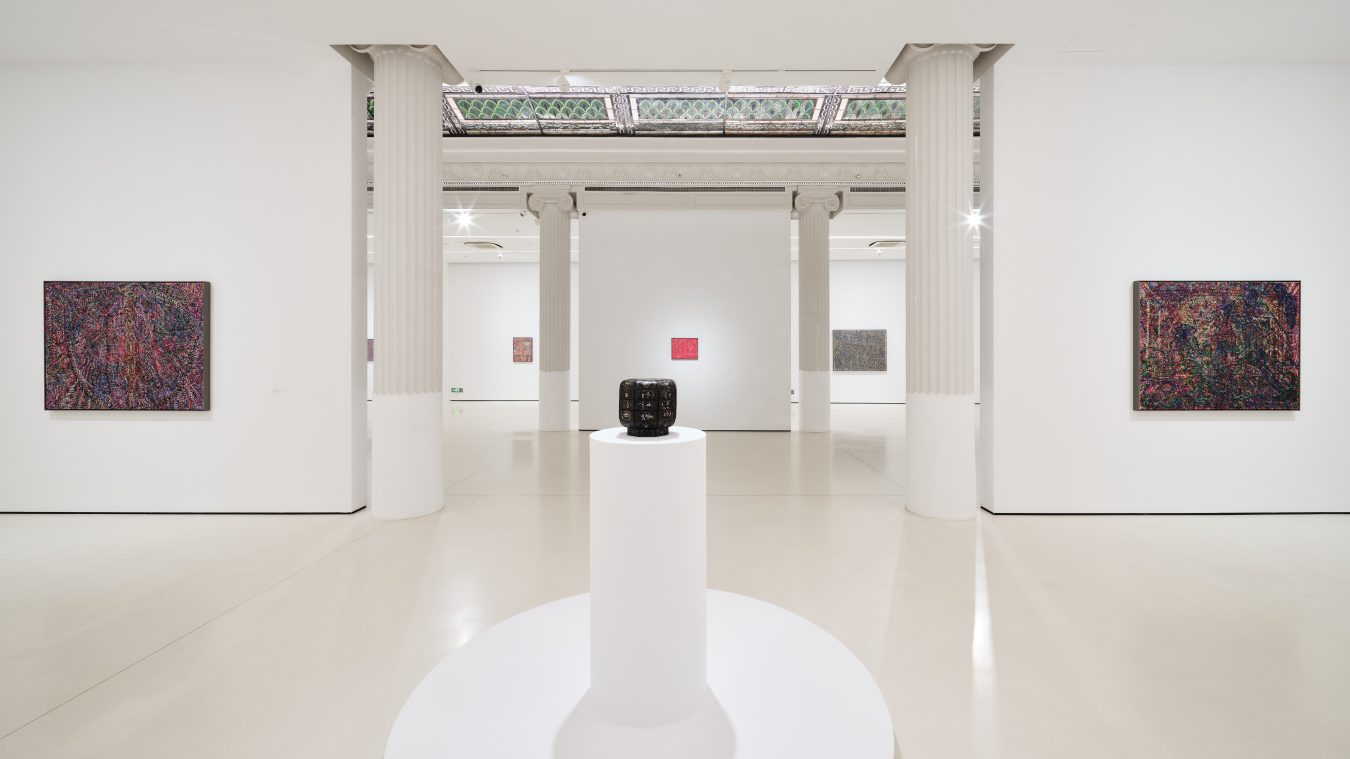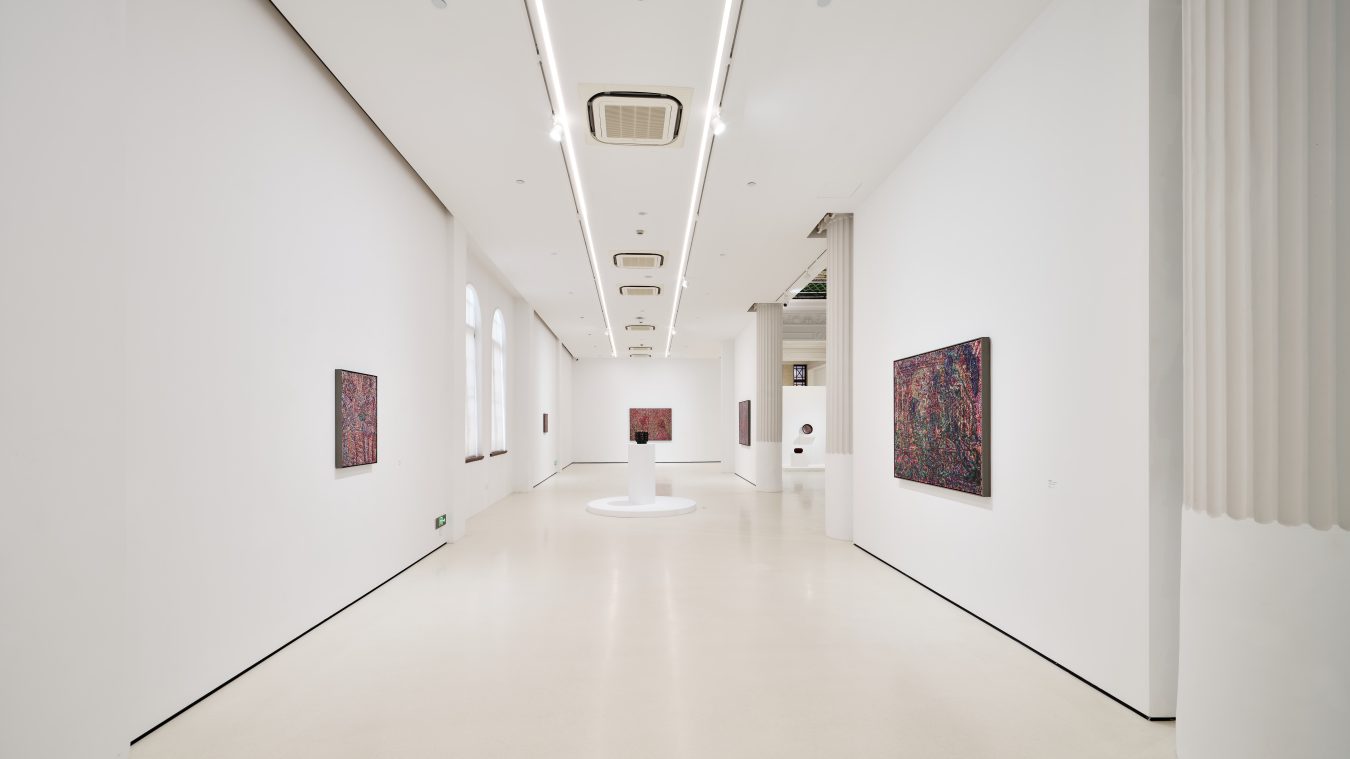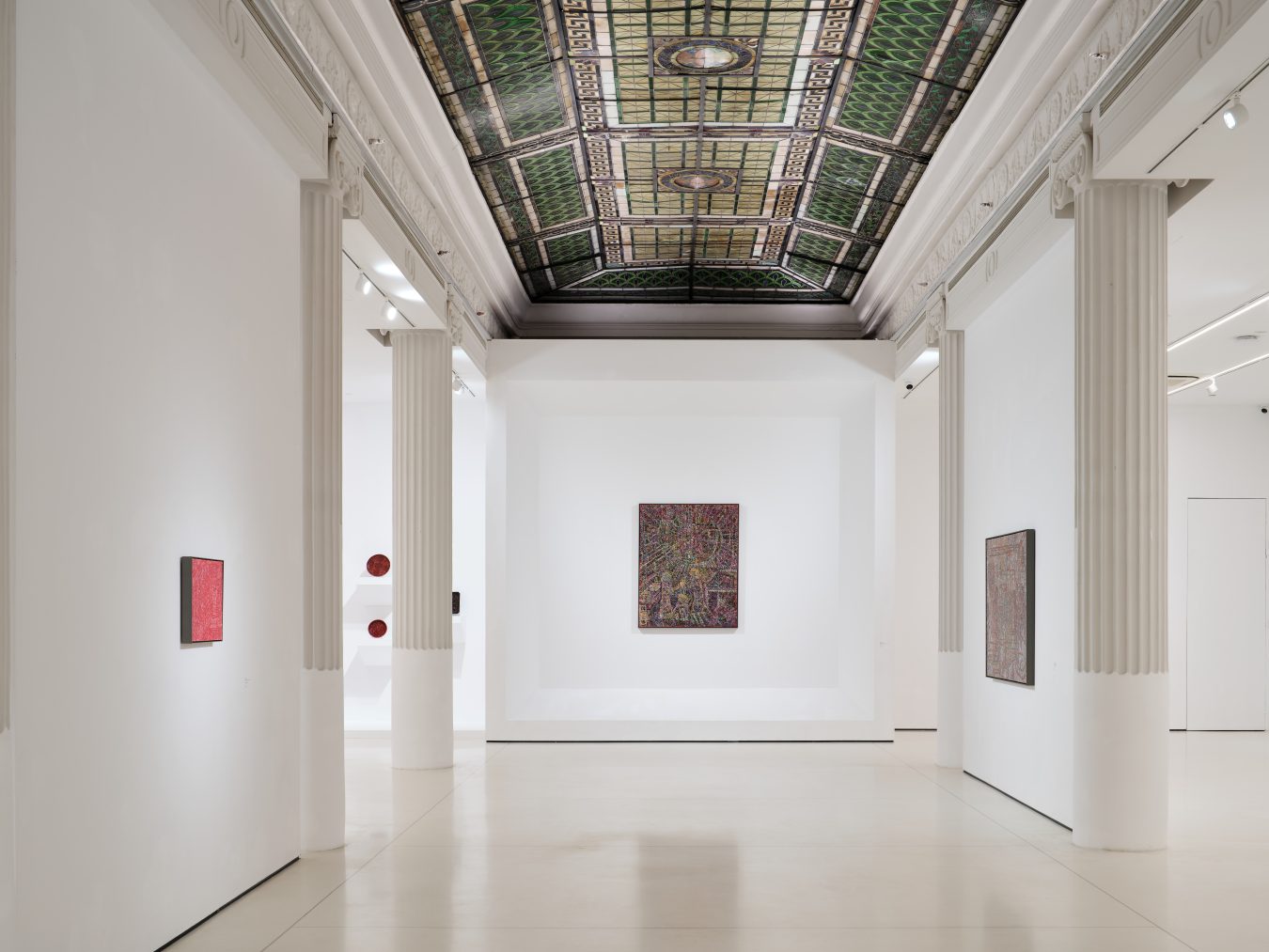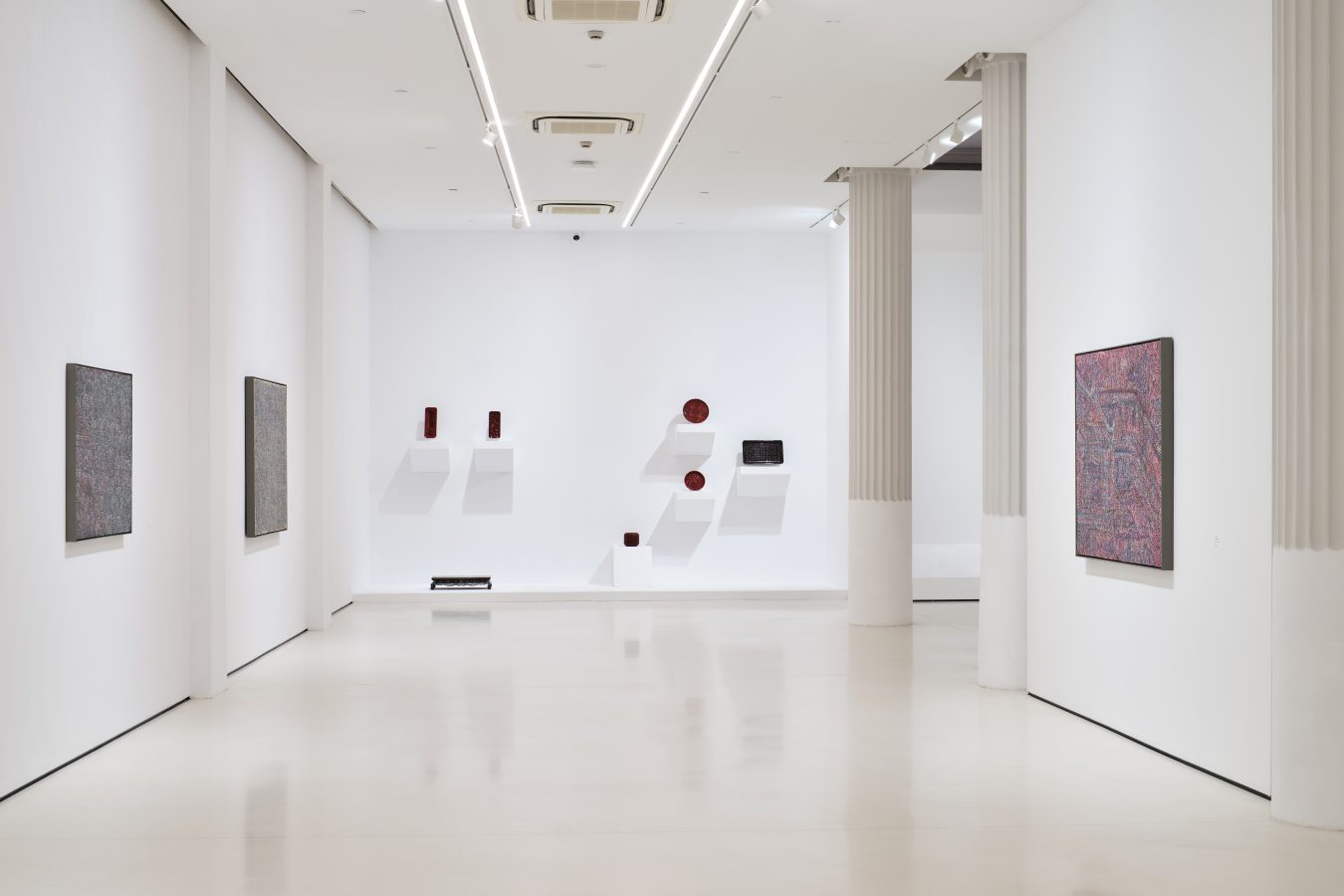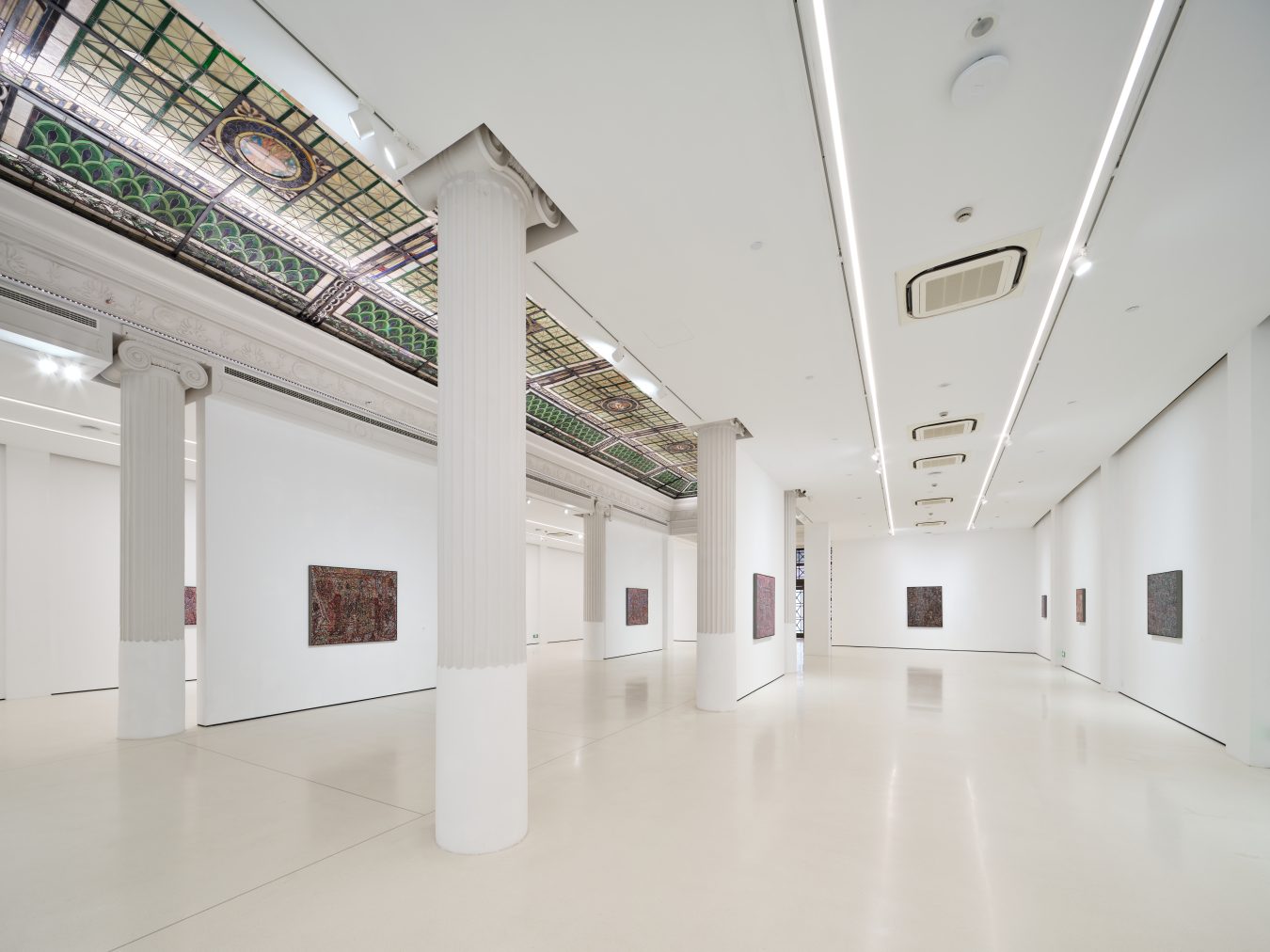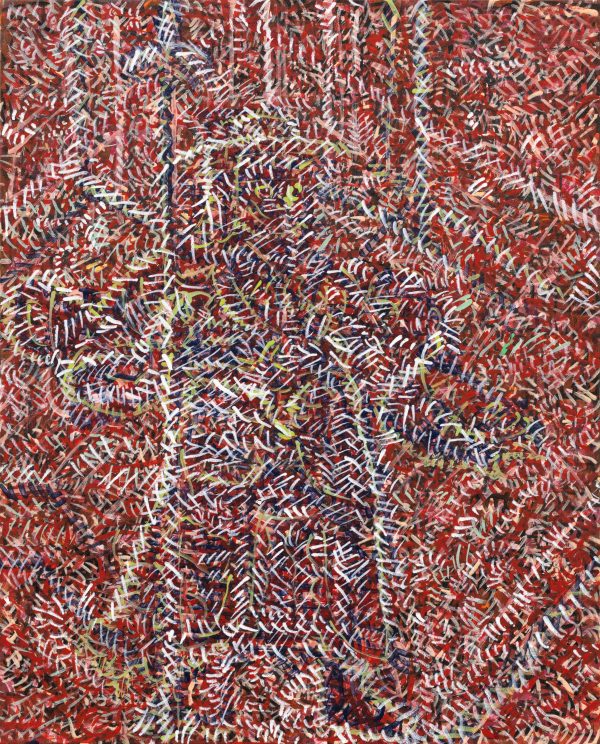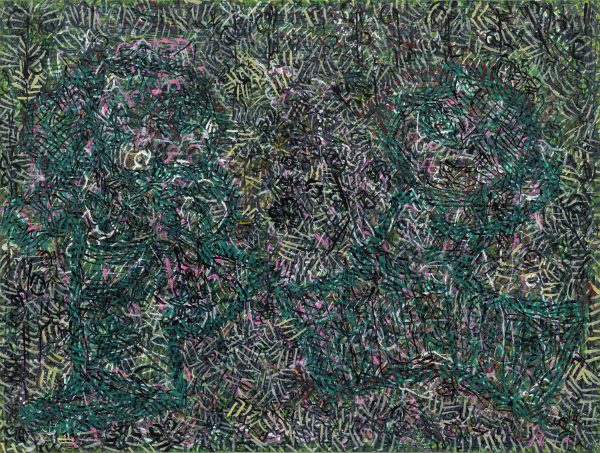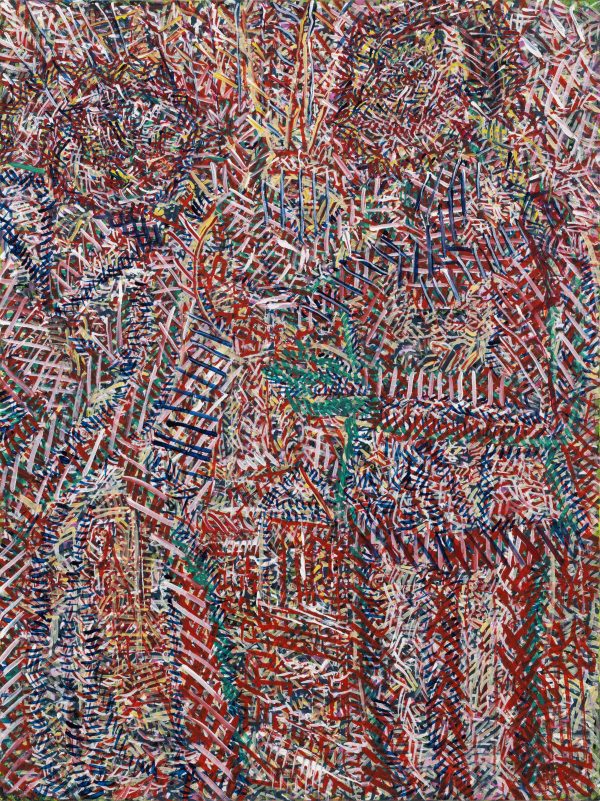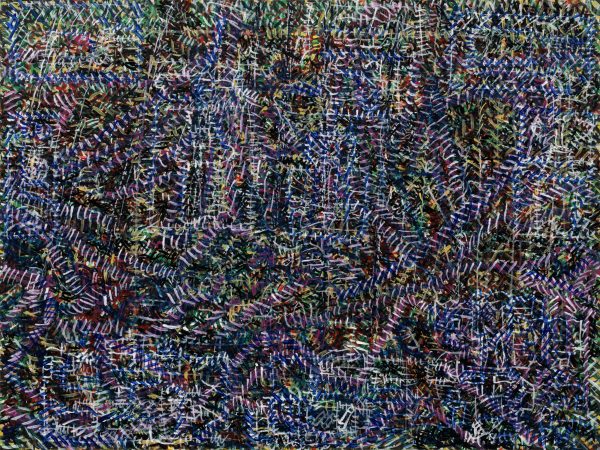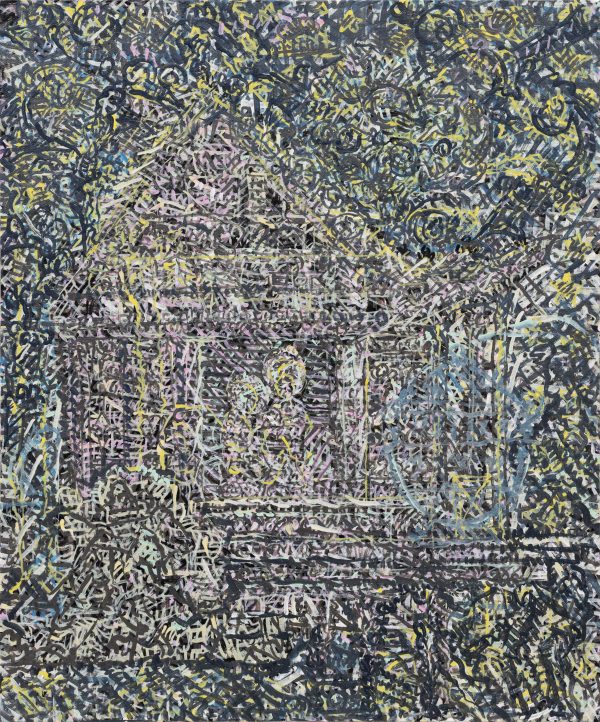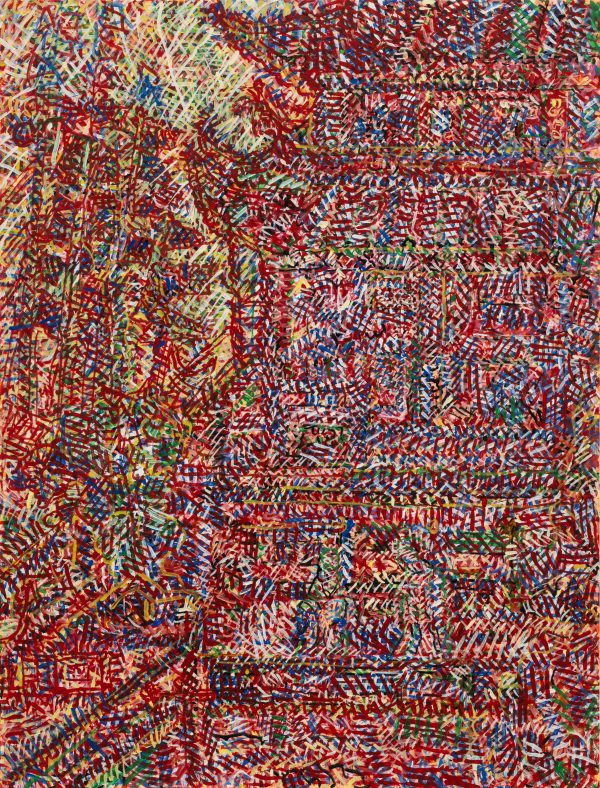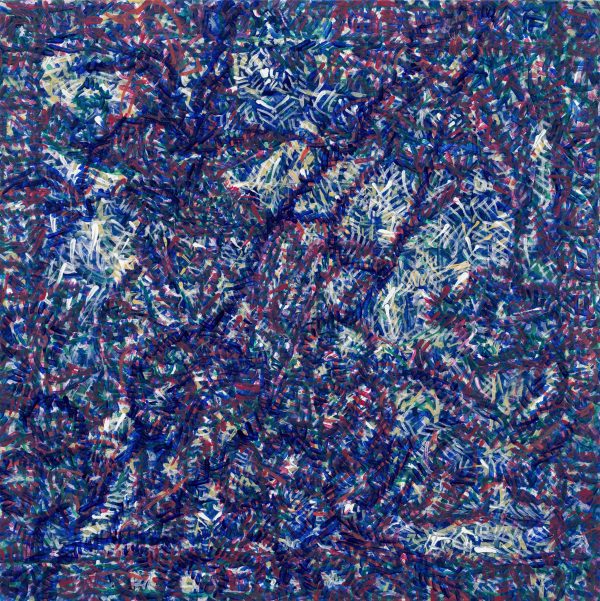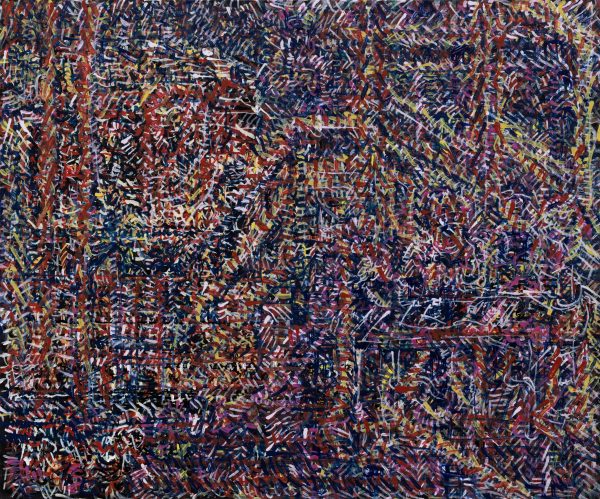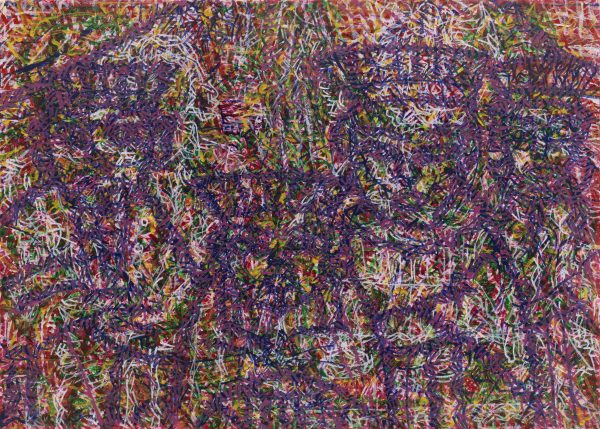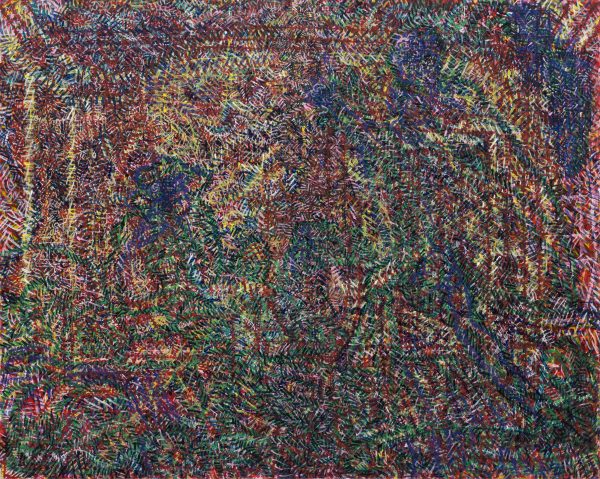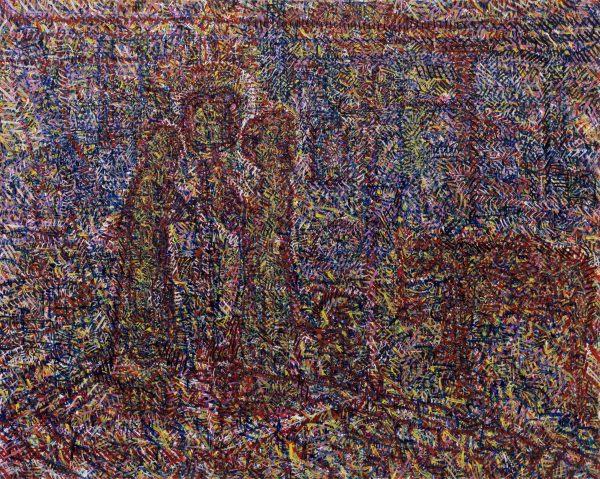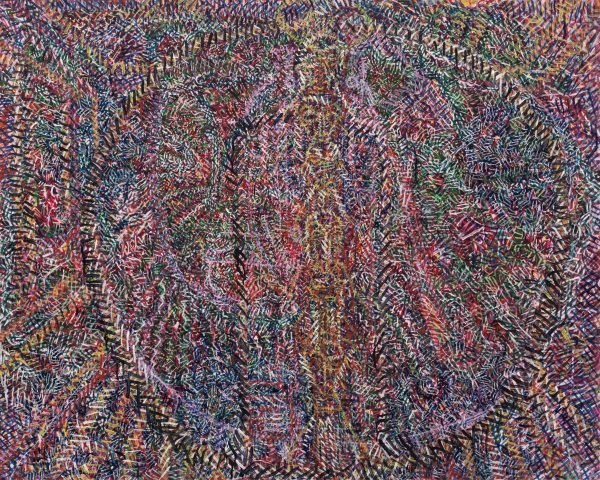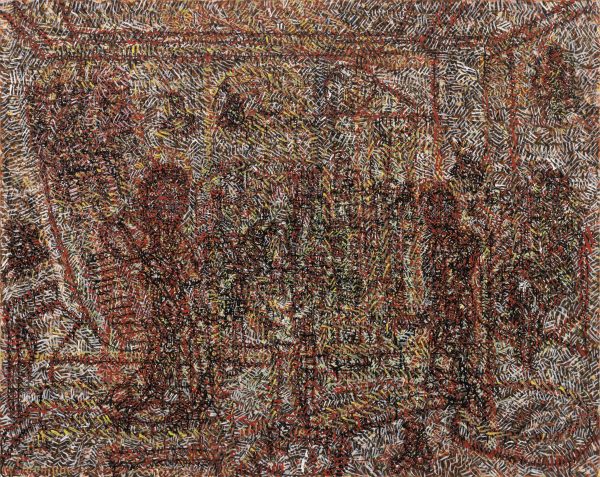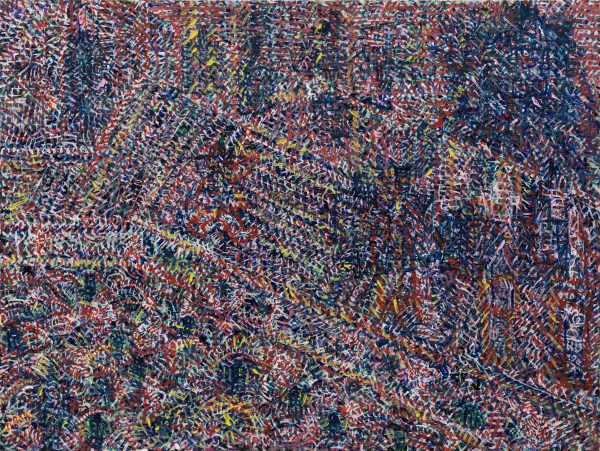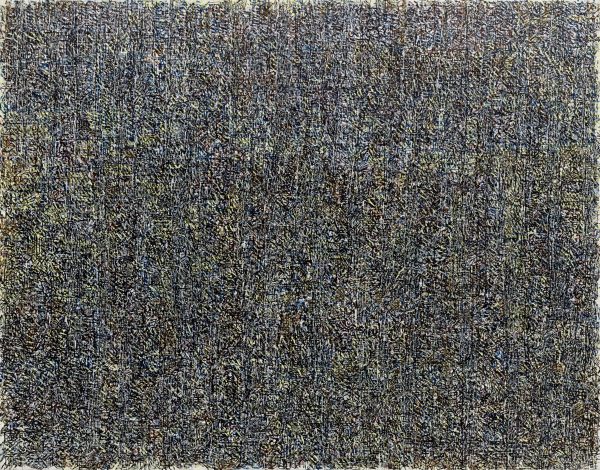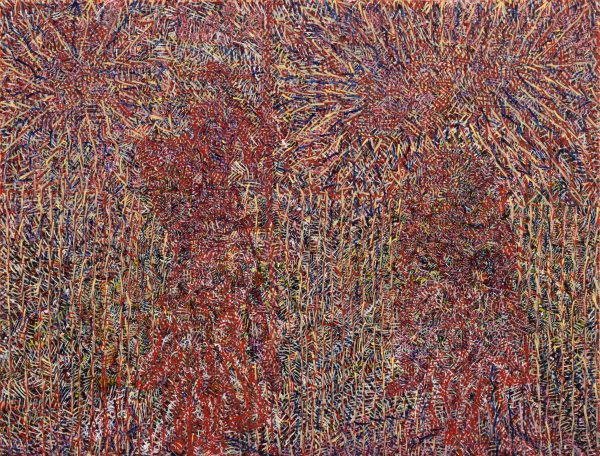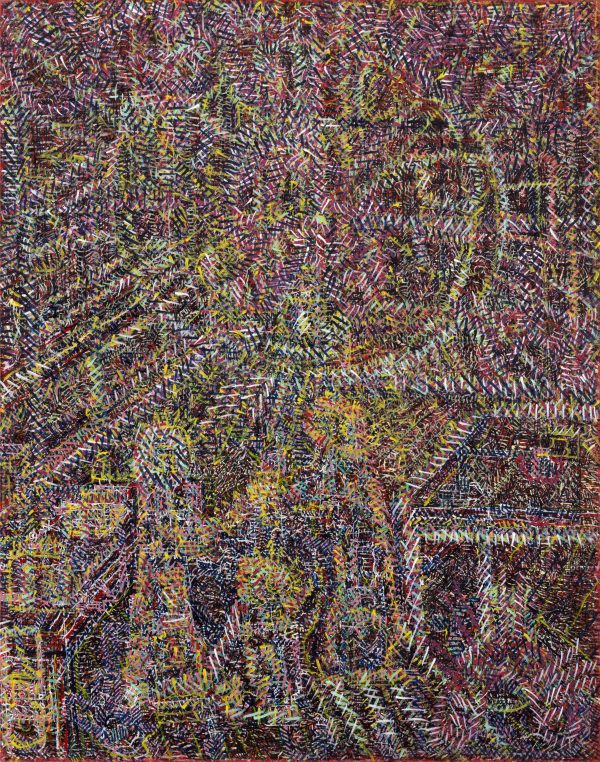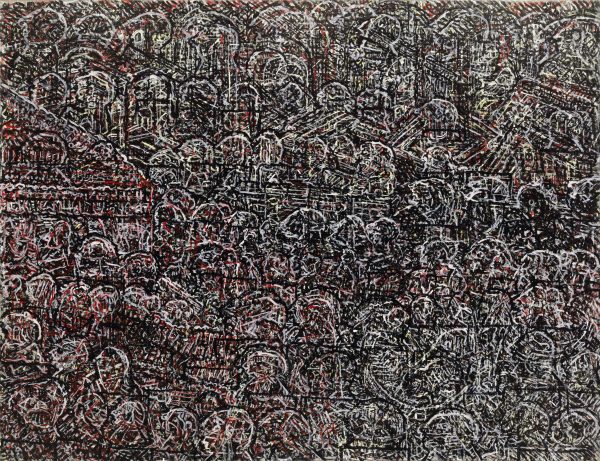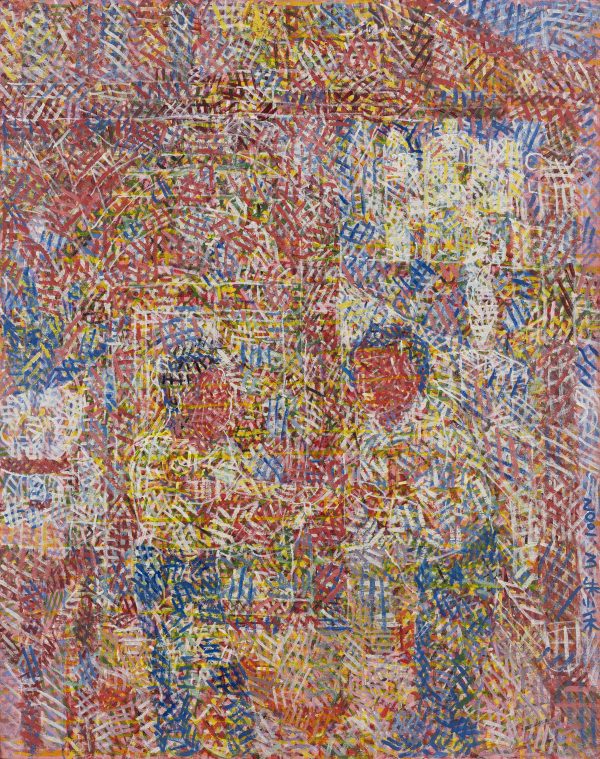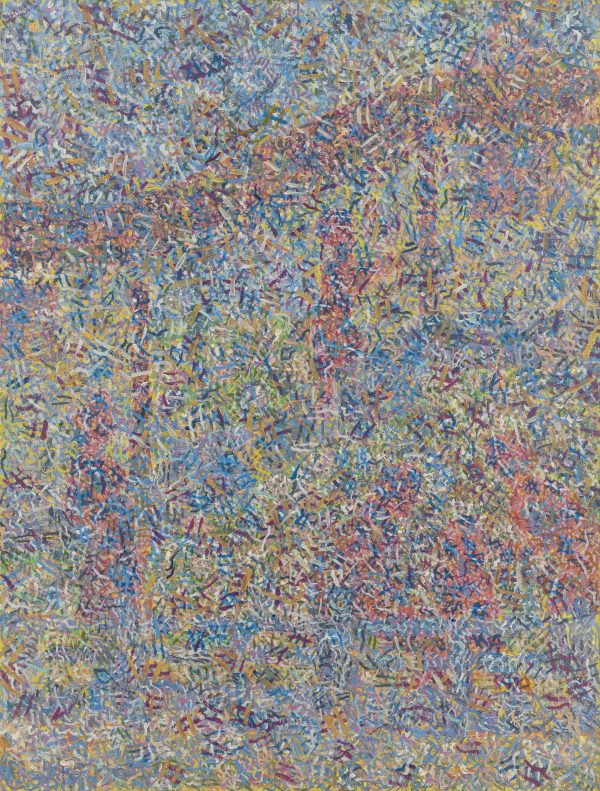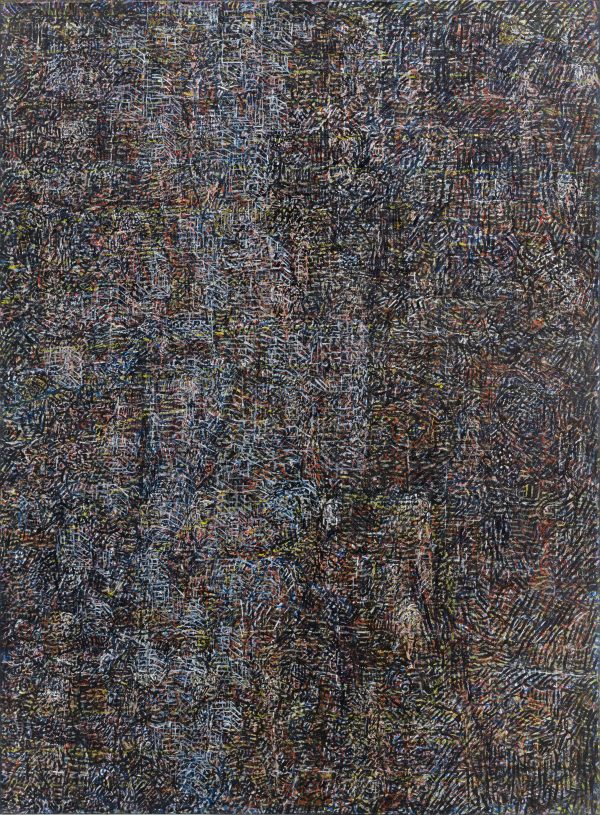Hive Center for Contemporary Art is pleased to announce Artist Zhu Xiaohe’s latest solo exhibition, ‘Performing Minutiae’, opening on 14 March 2025 at Hive Shanghai. Following his solo exhibition ‘Pinpoint’ at Hive Beijing in 2024, this new exhibition highlights a curated selection of Zhu’s recent paintings, refining and presenting his unique methodology in juxtaposition to antique lacquerware. This exhibition is curated by Yu Fei and it is on view until 15 April.
Two points determine a line.
As his studio and school define the two ends of Zhu Xiaohe’s minimalist life, art and philosophy become the two indispensable pivots of his existence. Zhu perceives art and philosophy as one interactive system, just as the continuous philosophical ruminations have closely remained with him in the intervals between his decades of uninterrupted painting practice. Convinced that art embodies a discourse independent of reality and historical context, Zhu first elaborated all his art-related principles in his monograph The Dissonant One, published in 2014, and gradually expanded them like a diary in the years to come. To accurately articulate his creative philosophy, Zhu identified and mobilised a specific lexicon, which, through repeated references and validation, have become irreplaceable keywords that unlock the nature of his practice that is closely related to threads.
Minutiae
Zhu Xiaohe’s daily routine is precise and consistent. He wakes up earlier than an average urban resident or artist and dedicates himself to this sanctuary of a modest studio room on fresh, quiet mornings, where he constructs the world of lines stroke by stroke, seemingly aimlessly in front of the canvas. This concentrated, uninterrupted practice continues until noon, after which he stops painting, without ever allowing himself to be removed from the creative context. In the afternoon, Zhu Xiaohe takes his customary stroll, where, in the ordinary process of alternating footsteps, his consciousness often unknowingly entangles itself with the lines created earlier, anticipating thousands of possibilities for their subsequent evolution. This evanescent, lingering sentiment follows him through the evening’s reading, relaxation, and rest until entering a new day in the cycle of time. In fact, how are strolling and creating not intertextual for Zhu? In each other’s dimension, lines and footsteps establish their own existence in the rhythm of parallel circulation, they move in a direction but never predict the finishing point, gradually validating inexplicable meanings through the infinite superposition and accumulation of minute and seemingly insignificant traces and movements.
Alain Badiou declares in his book In Praise of Love that ‘love is the minimal form of communism’, perhaps for Zhu Xiaohe, the line is the minimal unit of artistic language.
Processing
It is intriguing that in Zhu Xiaohe’s self-referential and theoretical writings, the word ‘processing’ often replaces ‘creation’ in describing his personal creative practice. The innate tendency to emphasise processing rather than creation could possibly be explained by his extensive background in the craft. In the 1980s, Zhu fortuitously enrolled in the Lacquerware of the Craft Department at the Sichuan Fine Arts Institute. At a time when the Oil Painting Department was offering sketch training and addressing the importance of daily experience, feelings, and representation, Zhu Xiaohe was exposed to and taught a series of rigorous lacquerware techniques, such as substrate preparation, lacquer harvesting, lacquering, painting and decorating, carving and incising, and polishing and burnishing. Still very young, Zhu Xiaohe learnt self-restraint and patience before he had the chance to indulge himself: concealing the so-called free will in the medium of lacquer, which has been passed down for millennia, and patiently polishing the vessels of time measured by years and months. As such, Zhu’s artistic processing does not depend on fleeting inspiration, surging passion, or legendary life experiences. Rather, he believes in the language of the medium and the strength of time and prefers to dismantle the too-frequently capitalized ‘I’ in the art world into a simple stroke.
Division
Zhu Xiaohe’s lines undoubtedly comply with the underlying rules he has established for himself. Like his extremely fixed routine, limited creative space, and the restricted radius of his life, Zhu inherently trusts the great possibilities raised within the restraints. Instead of aimless and feral expansion, his lines, as the lacquer craft, conform to the innate discipline of imitation, division, multiplying, and reorganisation. Zhu actively and consciously focuses on the iconography of traditional Chinese paintings, amassing a great collection of prints about Romance to the West Chamber and Biographies of Exemplary Women, as well as lianhuanhua books including General Yue Fei and Investiture of the Gods, not only because they have been his immediate access to visual resources since childhood, but also that the sketches and depictions of pavilions and pagodas, wits and beauties, divine warriors and generals are deeply constrained by the traditional structure and rules. Like the poetry form is to the poet and the rhythm to the musician, Zhu enjoys the paradoxical nature of ‘dancing in shackles’, constantly contesting with the known, creating divisions in the process of continuation, and eventually achieving the dialectical unity between rules and freedom, constraints and creativity.
Monosemy
‘The subject in art is not the artist. …The subjective existence of art are the works of art, and nothing else.’ Zhu Xiaohe must be deeply convinced of Badiou’s philosophy on the nature of art. For a long time, he has been eradicating the romantic experience and rejecting the representation of reality in his practice like a quiet rebel. Without composing any symbol, the solitary lines are thus detached from historical narratives and humanistic paraphrases. Zhu allows the monosemic art to become a pure belief and insists on returning to the nature of line and life, leaving it as the one with infinite potential.
¡ From a lecture by Alain Badiou on his writing 15 Theses on Contemporary Art, held at The Drawing Center on December 4, 2003, to present the Fall issue of the journal “lacanian ink”.
